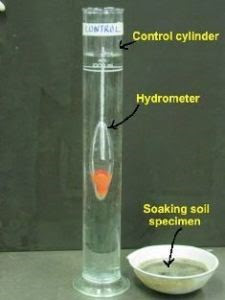SOIL REPORT: Consolidation test

SOIL REPORT Consolidation test Purpose: This test is performed to determine the magnitude and rate of volume decrease that a laterally confined soil specimen undergoes when subjected to different vertical pressures. From the measured data, the consolidation curve (pressure-void ratio relationship) can be plotted. This data is useful in determining the compression index, the recompression index, and the preconsolidation pressure (or maximum past pressure) of the soil. In addition, the data obtained can also be used to determine the coefficient of consolidation and the coefficient of secondary compression of the soil. Significance: The consolidation properties determined from the consolidation test are used to estimate the magnitude and the rate of both primary and secondary consolidation settlement of a structure or an earth fill, used in the design of engineered structures and the evaluation of their performance. Equipment : Consolidation device (including ring

